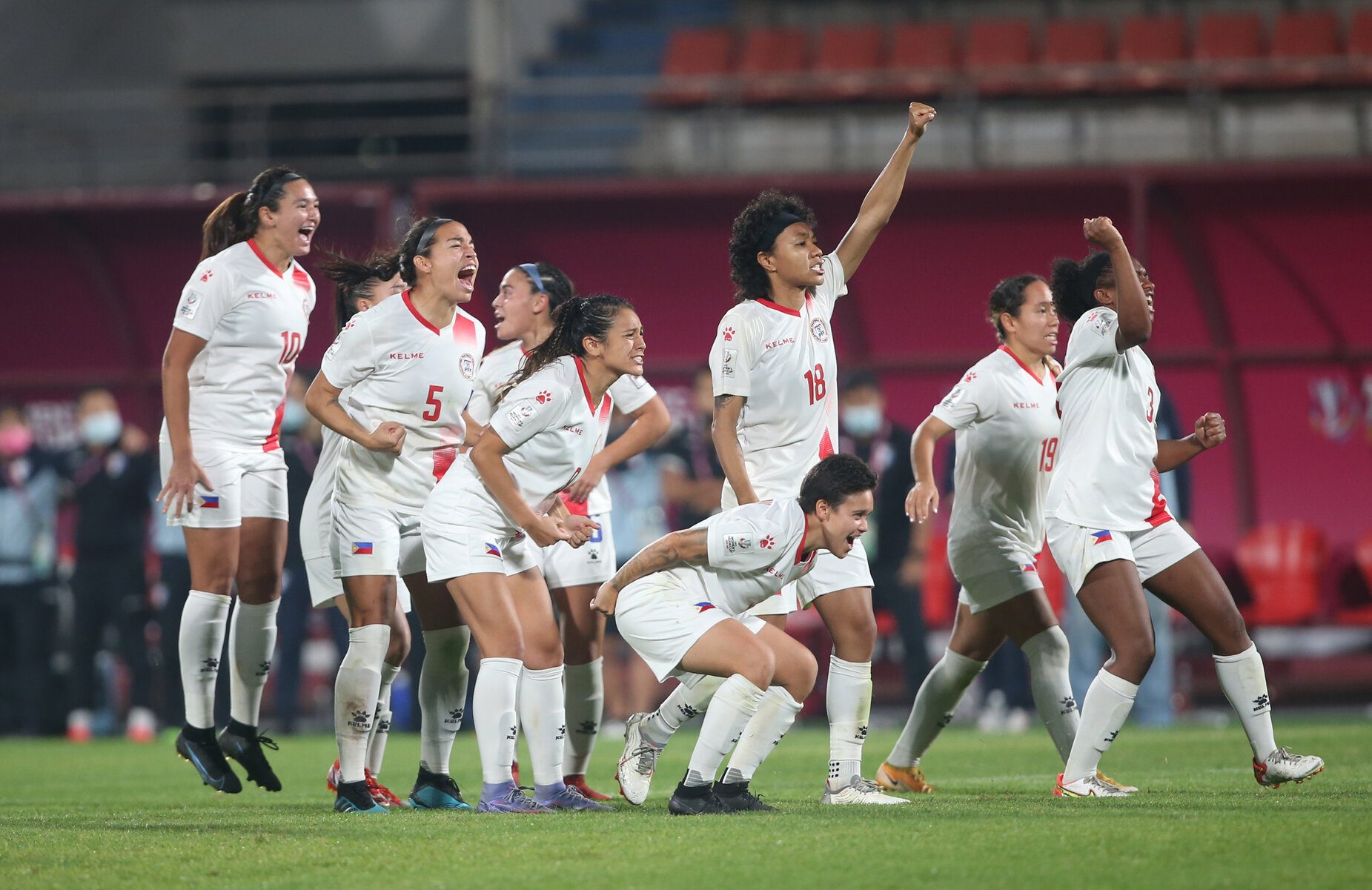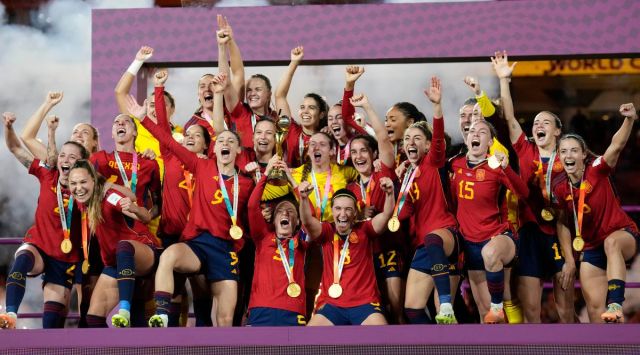“Women’s Football Progress in France
Related Articles Women’s Football Progress in France
Women’s Football Progress in France

Women’s football in France has experienced a remarkable transformation in recent years, evolving from a marginalized sport to a mainstream phenomenon. This progress is reflected in increased participation, improved infrastructure, growing media coverage, and the success of the national team on the international stage.
Historical Context
The history of women’s football in France dates back to the early 20th century, but its development was hindered by societal norms and prejudices. In 1941, the Vichy regime banned women’s football, deeming it "unsuitable for the female temperament." This ban remained in place until 1970, significantly impeding the growth of the sport.
Despite these challenges, women’s football persisted at the amateur level. In 1970, the French Football Federation (FFF) officially recognized women’s football, paving the way for the creation of a national league and the development of youth programs. However, progress remained slow in the early years due to limited resources and a lack of public interest.
Increased Participation
One of the most significant indicators of the growth of women’s football in France is the increase in participation rates. According to the FFF, there are now over 200,000 registered female players in France, a significant increase from previous decades. This growth is attributed to several factors, including:
- Increased visibility: The success of the national team and the growing media coverage of women’s football have inspired more girls to take up the sport.
- Grassroots development: The FFF has invested in grassroots programs to promote women’s football at the local level, providing opportunities for girls to learn and play the game.
- Role models: The emergence of talented French players like Wendie Renard, Amandine Henry, and Eugénie Le Sommer has provided young girls with inspiring role models to emulate.
Improved Infrastructure
The development of women’s football in France has also been supported by improvements in infrastructure. Many professional clubs have invested in dedicated training facilities and stadiums for their women’s teams, providing players with better resources and a more professional environment.
In addition, the FFF has invested in the development of refereeing and coaching programs, ensuring that women’s football is supported by qualified personnel. These investments have helped to improve the quality of play and the overall experience for players and fans alike.
Growing Media Coverage

The media coverage of women’s football in France has increased significantly in recent years, reflecting the growing popularity of the sport. Major broadcasters like Canal+ and beIN SPORTS now regularly broadcast women’s league matches and international tournaments, providing greater exposure for the sport.
In addition, newspapers and websites have increased their coverage of women’s football, providing fans with more in-depth analysis and reporting. This increased media coverage has helped to raise the profile of women’s football and attract new fans.
Success of the National Team
The success of the French national team, Les Bleues, has been a major catalyst for the growth of women’s football in France. The team has consistently performed well in major international tournaments, including the FIFA Women’s World Cup and the UEFA Women’s European Championship.
France hosted the 2019 FIFA Women’s World Cup, which was a resounding success. The tournament attracted record crowds and generated significant media coverage, further boosting the popularity of women’s football in France. Les Bleues reached the quarter-finals of the tournament, capturing the imagination of the nation.
Challenges and Opportunities
Despite the significant progress made in recent years, women’s football in France still faces several challenges. These include:
- Gender inequality: Women’s football still faces gender inequality in terms of funding, resources, and media coverage.
- Lack of professionalization: Many women’s league players are not full-time professionals, making it difficult for them to dedicate themselves fully to the sport.
- Limited commercial opportunities: Women’s football still lags behind men’s football in terms of commercial opportunities, such as sponsorship and merchandising.
However, there are also significant opportunities for further growth. These include:
- Investing in youth development: Continued investment in youth development programs will help to ensure a steady stream of talented players for the future.
- Promoting gender equality: Addressing gender inequality in football will help to create a more level playing field for women and girls.
- Increasing commercial opportunities: Attracting more sponsorship and investment will help to professionalize the women’s game and provide players with better opportunities.
Government Support
The French government has played a crucial role in supporting the development of women’s football. The Ministry of Sports has implemented policies to promote gender equality in sports and has provided funding for women’s football programs.
In addition, the government has supported the organization of major international tournaments, such as the 2019 FIFA Women’s World Cup, which has helped to raise the profile of women’s football in France.
Club Level Development
At the club level, teams like Olympique Lyonnais have been at the forefront of women’s football development. Lyon has consistently been one of the top teams in Europe, winning multiple UEFA Women’s Champions League titles. Their success has not only raised the standard of play in France but has also inspired other clubs to invest more in their women’s teams.
Other clubs like Paris Saint-Germain, Montpellier, and Bordeaux have also made significant investments in their women’s teams, contributing to the overall growth and competitiveness of the French league.
The Impact of Key Figures
Several key figures have played a significant role in the development of women’s football in France. Players like Wendie Renard, Amandine Henry, and Eugénie Le Sommer have not only excelled on the field but have also become ambassadors for the sport, inspiring young girls to pursue their dreams.
Coaches like Corinne Diacre, who managed the French national team, have also played a crucial role in shaping the development of women’s football. Their leadership and tactical expertise have helped to improve the quality of play and the overall competitiveness of the French team.
Future Prospects
The future of women’s football in France looks bright. With increased participation, improved infrastructure, growing media coverage, and the success of the national team, the sport is poised for further growth in the years to come.
Continued investment in youth development, the promotion of gender equality, and increased commercial opportunities will be crucial for realizing the full potential of women’s football in France. As the sport continues to grow, it has the potential to inspire a new generation of female athletes and contribute to a more inclusive and equitable society.
Conclusion
Women’s football in France has come a long way since its early beginnings. From facing societal prejudices and a lack of resources, the sport has emerged as a vibrant and growing force in French society. The progress made in recent years is a testament to the dedication of players, coaches, administrators, and fans who have worked tirelessly to promote the sport.
While challenges remain, the future of women’s football in France is bright. With continued investment and support, the sport has the potential to reach new heights and inspire generations to come. The journey of women’s football in France is a story of perseverance, determination, and the power of sport to transform lives.

